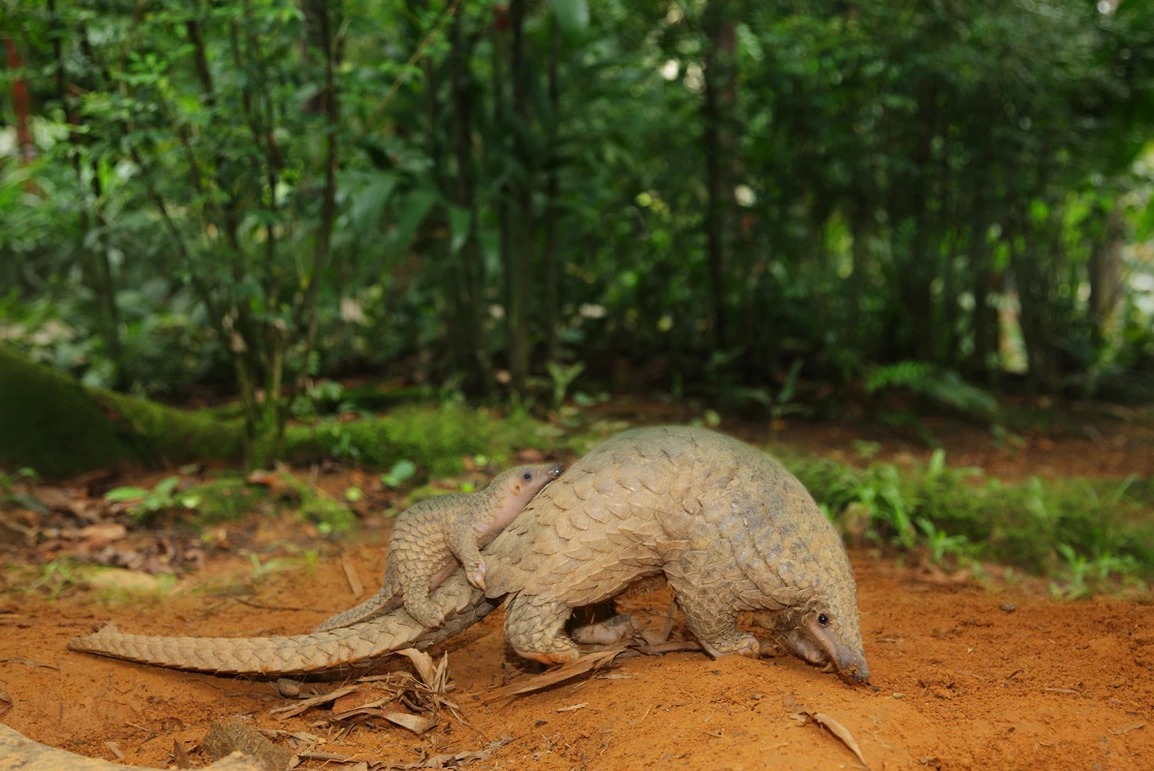The critical endangered Sunda Pangolin are protected animals in Singapore #YouShouldKnow

📷: Sunda Pangolin (Mandai Wildlife Group)
Also known as “living pinecones” due to their unique appearance, the Sunda Pangolin (Manis Javanica) are shy, nocturnal and solitary mammals, whose bodies are adorned with scales made of keratin – the same material that makes up our fingernails, hair, and nails. #DidYouKnow that they are the only scaly mammals on the planet which have been around for at least 45 million years!
The Sunda Pangolins can be found across Southeast Asia. In Singapore, they are mainly distributed in the Central Catchment Nature Reserve, Bukit Timah Nature Reserve and the surrounding nature parks. They can also be found in forested areas such as the Western Catchment Area, and on the islands of Pulau Ubin and Pulau Tekong.
Pangolins have no teeth, and use their long tongues – sometimes as long as their bodies except for their tails – to slurp up their primary diet of ants and termites. When threatened, they roll into a ball, like an armadillo, and they can release a stinky fluid from a gland at the base of their tails as a defence mechanism.
Sadly, this defence mechanism is often no match for poachers who illegally hunt pangolins for their ‘exotic’ meat and scales for folk medicine. The Sunda Pangolins have the unfortunate fame as the most trafficked mammal in the world, and are classified as Critically Endangered in the Singapore Red Data Book 2008 and globally on the International Union for Conservation of Nature (IUCN) Red List of Threatened Species. About 1 million pangolins have been snatched from the wild over the last 10 years; that’s one pangolin every five minutes. In fact, in April 2019, Singapore seized its largest shipment of pangolin scales, weighing 13 tonnes, amounting to about 17,000 pangolins! According to Born Free USA, at their current rate of decline, they’ll be extinct within a decade.
As the pangolins have a low fecundity rate of only one to two offsprings a year, the global pangolin population is depleting at a much faster rate than it can recover. In Singapore, the main threats to pangolins are habitat disruption as well as vehicles on roads. Pangolins sometimes wander into residential areas from nearby forests when they explore new territories, or look for food. Unfortunately, they are not adapted to cross highways with vehicles travelling at high speed, so they often end up as roadkill.
#YouShouldKnow that the pangolin is a protected animal in Singapore under the Endangered Species (Import and Export) Act. Locally, efforts to protect and conserve pangolins are coordinated through the Singapore Pangolin Working Group (SPWG). A Sunda Pangolin National Conservation Strategy and Action Plan was developed by the SPWG in 2018, to coordinate efforts relating to pangolin ecology, habitat protection, rescue, rehabilitation, release, and education. An example of such efforts is the Eco-Link @ Bukit Timah Expressway, which was initiated by the National Parks Board in 2014. Such wildlife crossing helped to preserve green spaces and ensure that wildlife have safe passages to traverse without disruption, minimising roadkills. We can also play a part by reporting illegal pangolin trading or poaching, rejecting pangolin products, or reporting sightings of pangolins to various animal research and welfare groups to assist in research and conservation efforts.
#Singapore #Wildlife #Pangolin #SundaPangolin #PangolinConservation #MandaiWildlifeReserve #Animals #Extinct #Conservation #Research #CityInNature
🔗: Learn more about the Pangolins here

